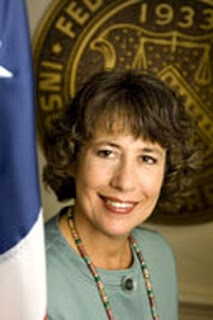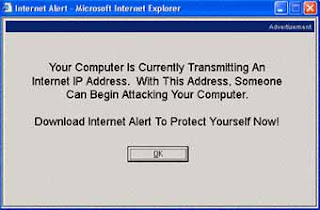Other career experience includes serving as Assistant Secretary for Financial Institutions at the U.S. Department of the Treasury (2001 to 2002), Senior Vice President for Government Relations of the New York Stock Exchange (1995 to 2000), a Commissioner and Acting Chairman of the Commodity Futures Trading Commission (1991 to 1995), and Research Director, Deputy Counsel and Counsel to Senate Majority Leader Robert Dole (1981 to 1988). While an academic, Chairman Bair also served on the FDIC's Advisory Committee on Banking Policy.
| Chairman Bair's prior work focused heavily on the banking sector. As the Assistant Treasury Secretary for Financial Institutions, she was charged with helping to develop the Administration's positions on banking policy issues. | Interview with Sheila C. Bair, Chair, Federal Deposit Insurance Corporation, at the 2008 'State of the Valley' Conference, San Jose, CA. |
Ms. Bair has served as a member of several professional and nonprofit organizations, including the Insurance Marketplace Standards Association, Women in Housing and Finance, Center for Responsible Lending, NASD Ahead-of-the-Curve Advisory Committee, Massachusetts Savings Makes Cents, American Bar Association, Exchequer Club, and Society of Children's Book Writers and Illustrators.
Five months after becoming Chairman, Ms. Bair was named to The Wall Street Journal magazine Smart Money's (November 2006) “Power 30” list – the magazine's lineup of the 30 most influential people in investing. Chairman Bair has also received several honors for her published work on financial issues, including her educational writings on money and finance for children, and for professional achievement. Among the honors she has received are: Distinguished Achievement Award, Association of Education Publishers (2005); Personal Service Feature of the Year, and Author of the Month Awards, Highlights Magazine for Children (2002, 2003 and 2004); and The Treasury Medal (2002). Her first book – Rock, Brock and the Savings Shock, a publication for children – was published in 2006.
Her first book – Rock, Brock and the Savings Shock, a publication for children – was published in 2006. This was followed by Isabel's Car Wash in 2008. Both titles show children good examples of money management.
In 2008 Forbes ranked her as the second most powerful woman in the world behind German chancellor Angela Merkel.
Chairman Bair received a bachelor's degree from Kansas University (1975) and a J.D. from Kansas University School of Law (1978). She is married to Scott P. Cooper and has two children.
SOURCES:













